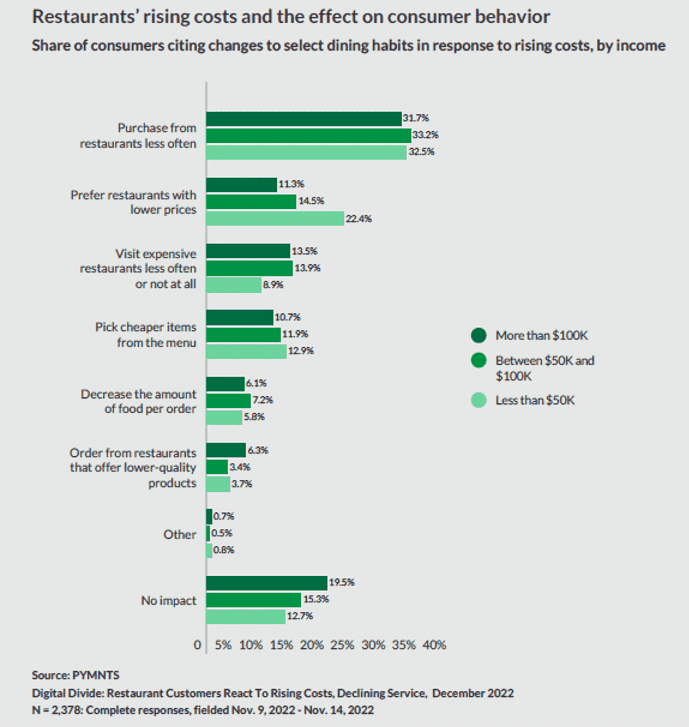Consumers Scrimp on Restaurant Meals to Stick to Their Budgets

The next installment of PYMNTS’ mini-series focused on consumer spending patterns takes a look at the restaurant sector.
Restaurants can appreciate that diners haven’t entirely given up on eating out in the name of cost-cutting. However, just as spending pullbacks have hit many other consumer-facing sectors, customers’ belt-tightening shifts are impacting restaurant owners from fast-food giants to independent table-service establishments.
Some inflation-caused changes in diner behavior are highlighted in PYMNTS’ “2022 Restaurant Digital Divide” report.

The most popular consumer change to dining habits in the face of rising costs, no matter the income level, is purchasing from restaurants more frequently, a phenomenon that also stretches across age demographics. However, a further look at the other changed habits may paint a more complete picture. Decreasing restaurant purchasing frequency takes up less than one-third of the total answer share for each income demographic, which could indicate that consumers are more inclined to find ways to decrease their bill than not eat out at all.
This tendency is borne out in other PYMNTS research. For example, PYMNTS data found that 48% of consumers are cutting out tipping by picking up takeout meals themselves. This is part of a 39% tip reduction by diners overall. This tendency was disproportionately highest among members of Generation Z, and restaurants trying to woo this demographic may consider enhancing pickup options. However, millennials outpace other age demographics in delivery orders, regardless of fees or tips.
An additional threat has been rising to challenge restaurant revenue numbers: grocery prepared meals, both through self-service kiosks and traditional checkouts. Whole Foods is reportedly considering expanding its prepared foods offerings, while Red Lobster has launched its own line of frozen meals. The effect on restaurant margins aside, this shift toward grocery-bought prepared meals as a cheaper alternative to eating out represents a possible behavioral change in consumer spending behavior.
Consumers continue to cut back, including when it comes to spending on restaurant and other prepared meals. However, even as shoppers do away with all but the essentials, many still manage to not abandon restaurants completely.

